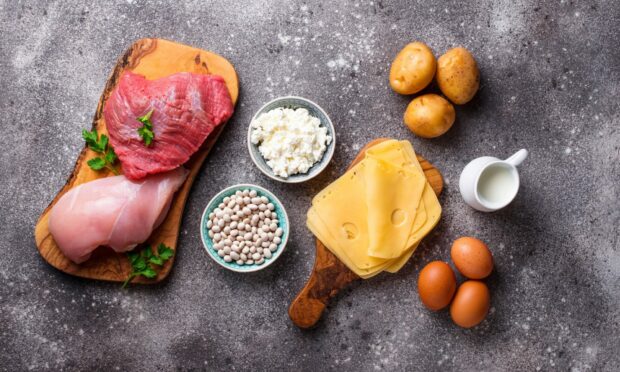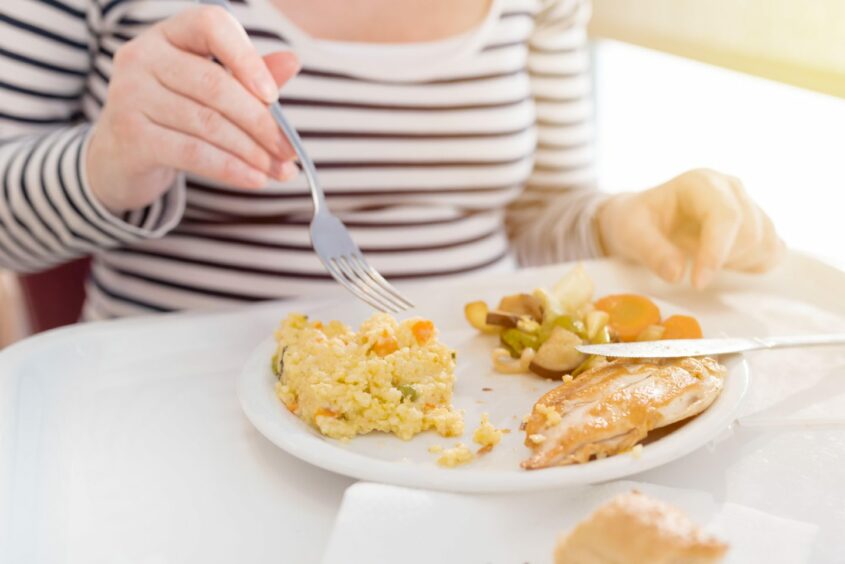You don’t need to be a nutrition expert to know that protein is an essential component of a healthy diet.
From Atkins to keto, a variety of diets promote a low-carb, protein-rich approach to eating, but did you know that consuming too much of it can be detrimental?
Even if you aren’t glugging protein powder shakes on a daily basis, it’s important to understand how to incorporate high-protein foods into your meals sensibly.
Here, nutritionists explain everything you need to know about protein.
What is protein?
“Protein is a macronutrient, second only to water in the body’s physical composition, and is essential for life,” says Suzie Sawyer, clinical nutritionist from Aminoscience (nhco-nutrition.co.uk). “It is the primary component of hair, muscles, skin, eyes and internal organs.”
Our bodies need 20 amino acids, nine of which are essential because we can’t physically produce them, so we have to get them from food sources.
“Protein exists in various amounts in foods, including beans, lentils, tofu, chicken, grains, meat, poultry, nuts and seeds,” explains Lifesum (lifesum.com) nutritionist Signe Svanfeldt.
“Animal protein usually contains all of the nine essential amino acids and provides ‘full protein value’, while plant-based proteins rarely contain them all.”
However, if you’re vegan or vegetarian, you can reach the “full protein value” by combining two or more plant-based protein sources, such as soy, beans and grains.
What are the benefits of protein?
Protein has multiple functions within the brain and body.
“It’s needed for the production of hormones and brain neurotransmitters,” Sawyer says. “For the maintenance and repair of body tissue, the production of antibodies in the immune system, for energy metabolism and to produce haemoglobin, which helps transport nutrients around the body.”
It’s particularly important for those in a growth phase of life, says Svanfeldt: “Such as children, teenagers or during pregnancy. The elderly also have an increased need for protein, in order to prevent muscle breakdown.”
It’s key for fuelling athletic performance and helps to regulate appetite, she adds: “A balanced meal with fibre, protein and healthy fats can also help us stay fuller for longer.”
What are the dangers if you eat too much protein?
“When it comes to food and eating, balance is key – we should never eat only one macronutrient,” Svanfeldt says. “If too much protein is consumed, you will not have room for the carbohydrates and fat your body needs.”
Plus, loading up on, say, turkey breast and eggs without any carbs, limits your options in terms of energy: “Our bodies will use the protein as energy instead of using it for other tasks, such as cell growth.”
What happens if you’re eating a surplus?
“Any excess protein is excreted via the urine,” Sawyer says. “Long-term excessively high protein intake may cause issues with the kidneys and it can increase the rate of calcium loss, which is a factor for women and bone health during the menopause.”
The good news is that most people are unlikely to be eating an excessive amount, Sawyer adds: “I see more cases of protein deficiency in my clinical practice than anything else, which causes many health issues, especially the muscle wasting disease, sarcopenia.”
How much protein should you aim to eat?
The amount of protein required depends on your weight.
“A general recommendation is that 0.8g of protein per kg body weight is an adequate amount of protein daily for a healthy adult,” Svanfeldt explains. “Although, if you workout a lot, aim to lose weight or are elderly, you have an increased protein need and require around 1.2 to 2.0g of protein per kg body weight.”
It’s best to spread your intake through the day, Sawyer says: “It’s important to eat protein at every meal – this is essential for metabolic balance. If you are vegan, then you will need to balance food intake to ensure sufficient essential amino acids are consumed, i.e. rice and beans.”
Do protein powders or supplements present more of a risk in terms of excess consumption?
“With supplements, it can be easy to consume too high doses of nutrients, due to them being very concentrated,” Sawyer says.
“Protein powders are, however, safe to consume in the recommended amounts, although the benefits of eating whole foods means that you get a lot of other beneficial nutrients as well.”







Conversation